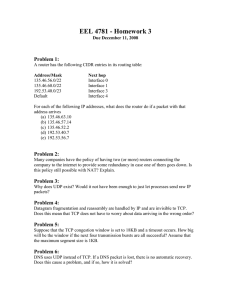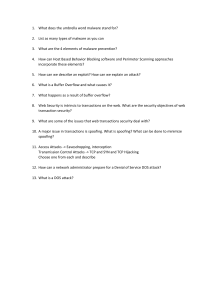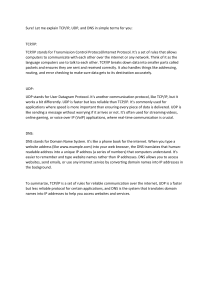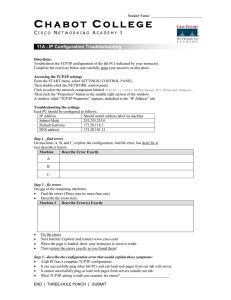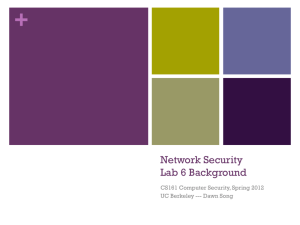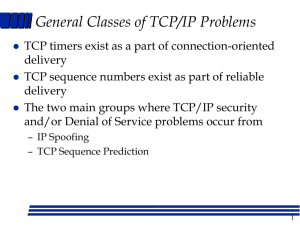View File
advertisement
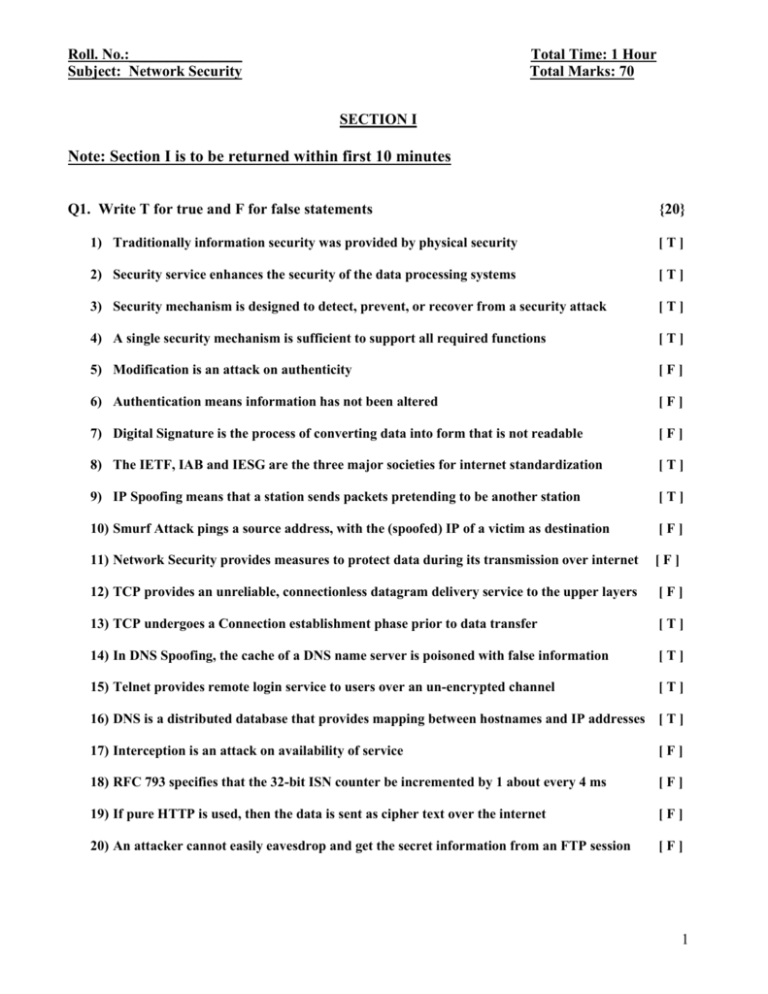
Roll. No.:_______________
Subject: Network Security
Total Time: 1 Hour
Total Marks: 70
SECTION I
Note: Section I is to be returned within first 10 minutes
Q1. Write T for true and F for false statements
{20}
1) Traditionally information security was provided by physical security
[T]
2) Security service enhances the security of the data processing systems
[T]
3) Security mechanism is designed to detect, prevent, or recover from a security attack
[T]
4) A single security mechanism is sufficient to support all required functions
[T]
5) Modification is an attack on authenticity
[F]
6) Authentication means information has not been altered
[F]
7) Digital Signature is the process of converting data into form that is not readable
[F]
8) The IETF, IAB and IESG are the three major societies for internet standardization
[T]
9) IP Spoofing means that a station sends packets pretending to be another station
[T]
10) Smurf Attack pings a source address, with the (spoofed) IP of a victim as destination
[F]
11) Network Security provides measures to protect data during its transmission over internet
[F]
12) TCP provides an unreliable, connectionless datagram delivery service to the upper layers
[F]
13) TCP undergoes a Connection establishment phase prior to data transfer
[T]
14) In DNS Spoofing, the cache of a DNS name server is poisoned with false information
[T]
15) Telnet provides remote login service to users over an un-encrypted channel
[T]
16) DNS is a distributed database that provides mapping between hostnames and IP addresses [ T ]
17) Interception is an attack on availability of service
[F]
18) RFC 793 specifies that the 32-bit ISN counter be incremented by 1 about every 4 ms
[F]
19) If pure HTTP is used, then the data is sent as cipher text over the internet
[F]
20) An attacker cannot easily eavesdrop and get the secret information from an FTP session
[F]
1
Roll. No.:_______________
Subject: Network Security
Total Time: 1 Hour
Total Marks: 70
SECTION II
Q2. What are the five major categories of security services that X.800 specifies?
{10}
Q3. Classify Security Attacks? Explaining their consequences with the help of diagrams
{10}
Q4. Explain TCP/IP Layering with the help of a drawing? How HTTP works over TCP/IP? {10}
Q5. Define the following:
a) Computer Security
{10}
b) Network Security
c) Internet Security
Q6. Explain the following Network protocols vulnerabilities and their prevention:
a) ARP Spoofing
b) TCP SYN Attack
c) Smurf DoS Attack
{10}
The End
2

